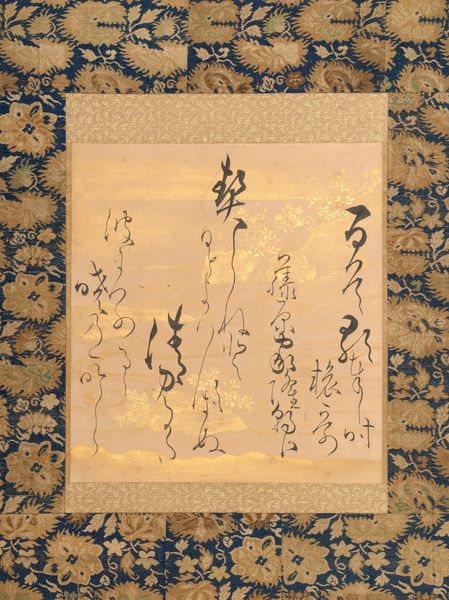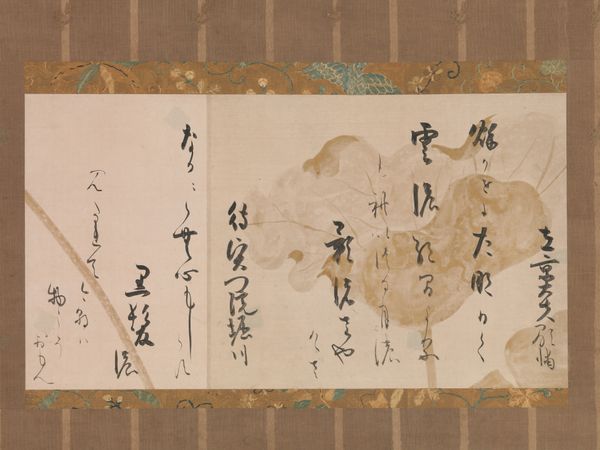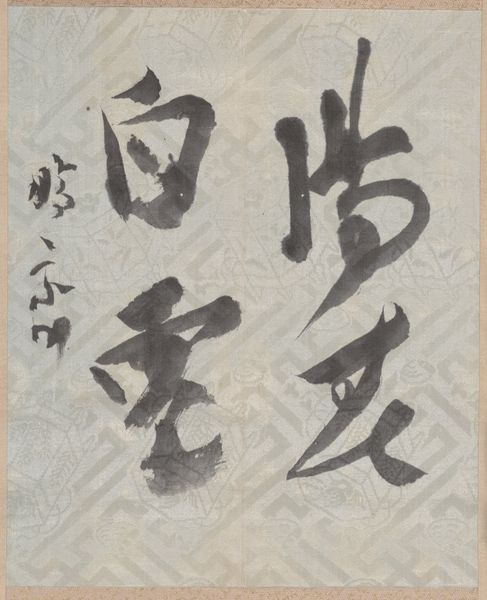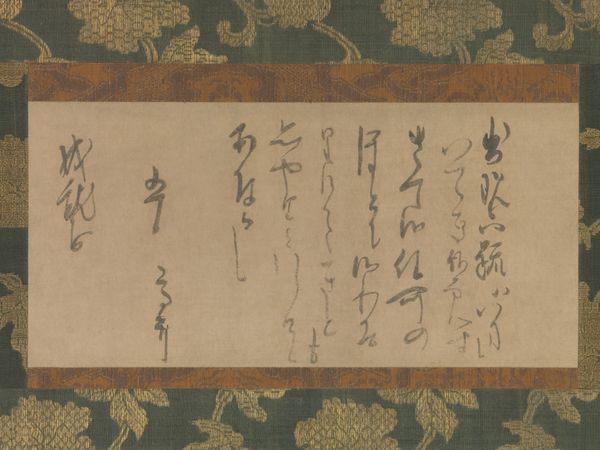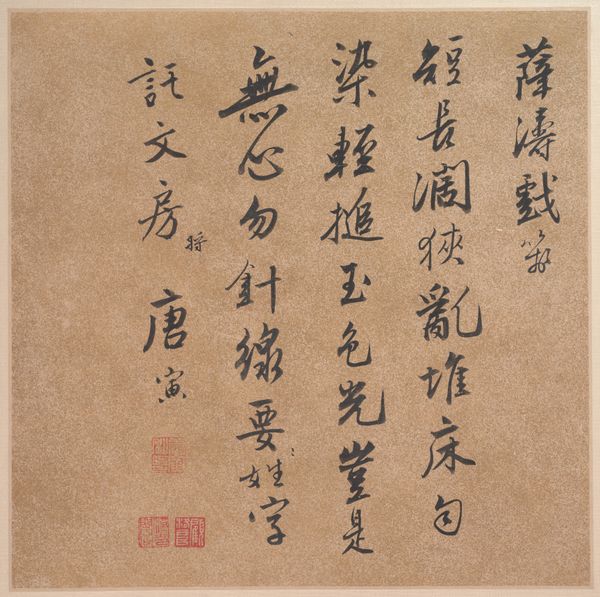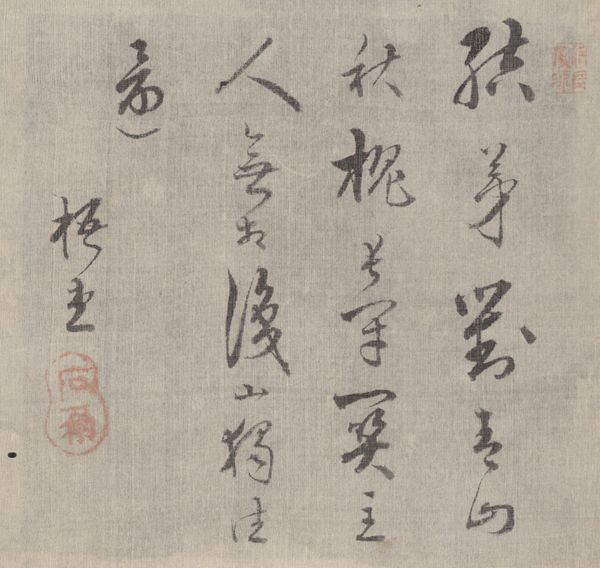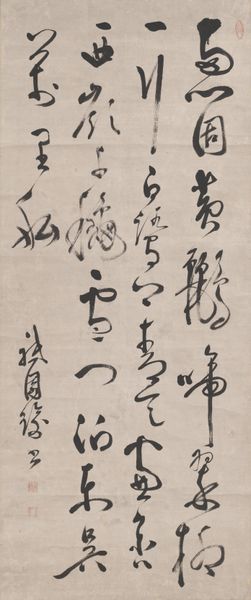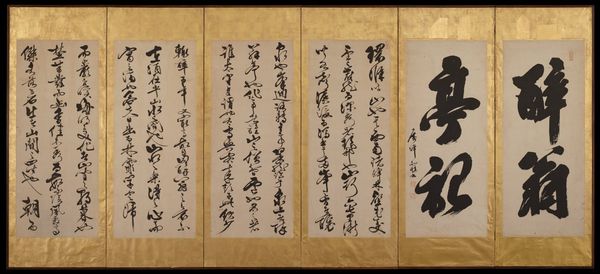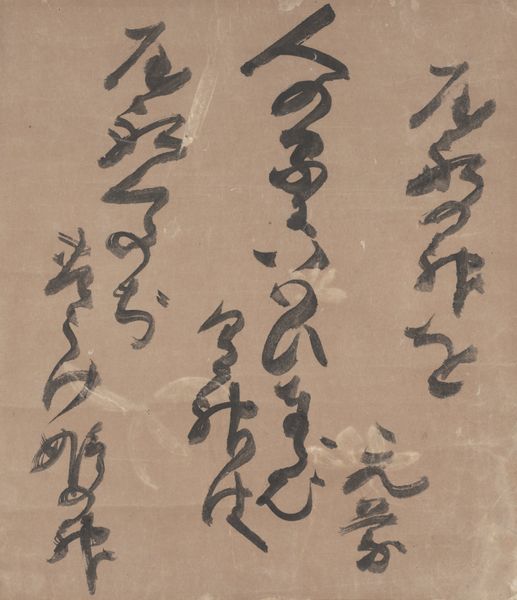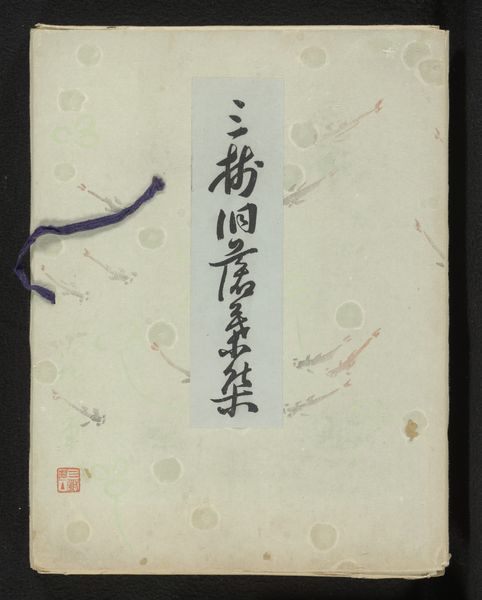
Poem by Ki no Tsurayuki (ca. 872–945) on Decorated Paper with Cherry Blossoms 1621 - 1687
0:00
0:00
painting, paper, ink
#
water colours
#
narrative-art
#
painting
#
asian-art
#
landscape
#
paper
#
ink
#
geometric
#
yamato-e
#
calligraphy
Dimensions: Image: 8 3/8 × 7 11/16 in. (21.2 × 19.5 cm) Overall with mounting (a): 41 1/4 × 12 1/2 in. (104.8 × 31.7 cm) Overall with knobs (a): 41 1/4 × 14 1/4 in. (104.8 × 36.2 cm)
Copyright: Public Domain
Curator: Editor: Right, let's discuss "Poem by Ki no Tsurayuki (ca. 872–945) on Decorated Paper with Cherry Blossoms," made between 1621 and 1687 by Ogata Soken. It’s done with ink and watercolours on paper, currently housed in the Metropolitan Museum. The geometric background creates such a calm and refined atmosphere; the paper decorated with natural themes really speaks to me! How would you interpret it? Curator: I focus on the materiality and processes used in its creation. Note the combination of ink, watercolours, and decorated paper itself. Consider where Soken sourced his pigments, and what trade networks enabled access to such specific materials. The paper wasn't just a surface; it was itself an object of value, demanding a specific type of labor. What implications do you see in blurring lines between craft and painting here? Editor: Well, traditionally "high art" is distinct from functional or decorative crafts, right? Is Soken trying to make us question those boundaries through a fusion of calligraphy, painting, and the decorative elements of the paper itself? Curator: Exactly. It challenges elitist artistic hierarchies by elevating decorative arts through association with calligraphy, or the "high art". Who, then, decided what was worthy of our veneration, and who benefitted? What assumptions did the work challenge in its time? Think about class and social values being expressed via materials, methods, and function. Editor: That really changes my understanding. Seeing the artwork as not just a poem or pretty scenery, but also an outcome of a much bigger economic and social world that shaped artistic value back then is a fresh viewpoint for me. I hadn’t even considered the pigment sourcing. Thanks! Curator: Absolutely. Appreciating the labor and economic circumstances shaping the artwork opens new avenues for comprehending meaning. Keep exploring!
Comments
No comments
Be the first to comment and join the conversation on the ultimate creative platform.
